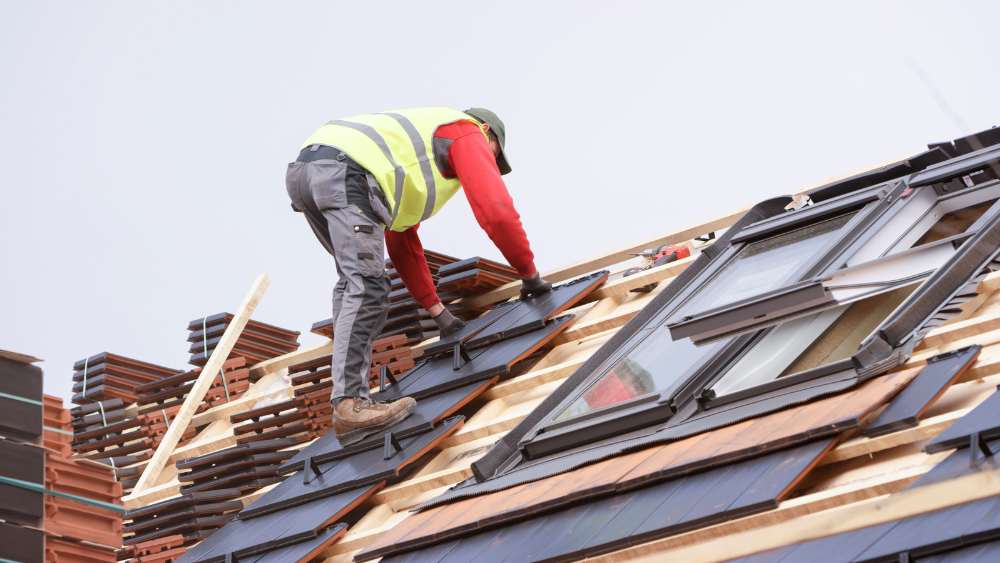Get to Know the Roof Maintenance Tips That Will Save You Time and Effort

Building’s roof is a crucial component because it offers protection from the weather elements. At the same time, the roof maintains the structure’s integrity, and ensures the security and comfort of the house.
To increase roof longevity and prevent expensive repairs, routine maintenance is essential. In order to assist homeowners and property managers in maintaining their roofs in outstanding shape for many years to come, this article offers 10 vital roof maintenance tips.
1. Regular Inspections
Regular roof inspections are essential for maintaining the integrity of your roof. This way, you can avoid costly repairs due to potential roof problems. In a perfect sense you ought to inspect your roof twice a year, in the spring and the fall. By performing these seasonal inspections, you can spot issues before they become serious. You can also take immediate action to keep your roof in good shape all year.
In addition to routine inspections every two years, it’s crucial to perform thorough inspections following climate disaster events, such as storms or heavy rain.
Watch out for potential indications of deterioration when inspecting your roof. Cracked or missing shingles, which can expose the underlying structure to water damage and leaks, are typical problems to watch out for. Keep an eye out for any loose flashing around chimneys, vents, and other roof protrusions, as these areas are vulnerable to leaks if not properly sealed.
2. Clear Debris Regularly
The lifetime and functionality of your roofing system depend on proper roof maintenance. On the roof’s surface and in the gutters, leaves, twigs, and other debris frequently assemble, obstructing the free passage of water and perhaps resulting in damage over time. To prevent these problems, regular roof and house cleaning and debris removal are essential.
Particularly during periods of intense rainfall or snowmelt, the buildup of debris on the roof may cause water to collect. Water collecting on the roof may seep through minute fissures and openings in the roofing material, causing leaks and interior water damage. Additionally, extra weight from the debris may strain the roof’s structure, possibly causing structural harm.
The best action is to remove the debris at least once every few months or more frequently during seasons with dense foliage or bad weather. Also don’t forget to clean your grill.
3. Address Leaks Immediately
If you spot indications of water leaks inside your house, such as water stains on the walls or ceiling, take quick action. Find the leak’s source and temporarily fix it until a qualified roofing contractor can perform long-term repairs.
Delaying repairs may make the damage worse and necessitate more expensive restoration work.
Your roof might suffer damage from harsh weather, so it’s important to inspect for damage immediately to identify any problems that might have developed. Remember disaster readiness is important.
4. Maintain Gutters and Downspouts
Water overflow that may seep into the roof structure or foundation might result from clogged gutters and downspouts that prevent proper water drainage.
Regularly clean the gutters and downspouts, and to stop debris buildup, think about installing gutter guards.
Gutters are also house to so many germs so it’s better to take gutter inspection very seriously.
5. Trim Overhanging Branches
During storms or windy conditions, overhanging branches might harm your roof. To avoid them scratching or destroying the roofing material, trim back branches that are too close to the top.
Additionally, less debris will fall onto the roof due to this. Falling branches have a way to seep deep into the roof where they cause trouble. So it’s better to take care of these as soon as you can.
6. Check Flashing and Sealants
Flashing and sealants are vulnerable to damage around chimneys, vents, skylights, and other roof protrusions. When inspecting the roof, check these places to make sure the sealants and flashing are solid. Reapply sealants as necessary and replace any cracked or broken flashing.
Relying upon any cracked or broken flashing as soon as possible is critical. Flashing is a waterproof barrier to keep water from penetrating the roof’s weak spots. Ensure any new flashing is securely fastened, installed correctly, and appropriate for the roofing material.
Sealants may deteriorate over time as a result of exposure to the weather. Check the sealants’ condition as part of your routine inspections and reapply them as necessary. High-quality sealants provide a shield that keeps water out and improves your roof’s overall waterproofing.
7. Address Moss and Algae Growth
The growth of moss and algae on the roof’s surface can trap moisture, hastening the deterioration of the roofing components.
For moss and algae development removal, use a mild cleaning agent or a solution of water and vinegar. Do not harm the roof by using strong chemicals or high-pressure washing. Make sure you follow the right strategy for pest control as well.
8. Insulate and Ventilate Attics
Maintaining the roof’s condition greatly depends on proper attic insulation and ventilation. Inadequate ventilation can accumulate heat and moisture, which could hasten the breakdown of roofing materials.
Consult a professional to ensure your attic has the correct ventilation and insulation.
9. Snow and Ice Removal
If you live where it snows a lot, be careful not to let snow and ice build up on the roof. The additional weight may stress the roof’s structure, increasing the risk of collapse or other harm.
To clear snow, use a roof rake; however, stay away from sharp objects that could damage the roof.
10. Hire Professional Roof Inspections
Regular homeowner inspections are crucial, but hiring a qualified roofing contractor to perform a thorough check every few years is also vital. Professionals have the knowledge to find hidden problems and suggest required maintenance or repairs. Click here to get in touch with a roofing contractor.
Professional roofing contractors are well-equipped to see possible problems that can go undiscovered during routine inspections since they bring experience and specific knowledge to the job. They can analyze the condition of your roof with a great eye for detail because of their extensive knowledge of roofing materials, construction methods, and industry best practices.
During a professional examination, these specialists carefully analyze every component of your roof, including the shingles, flashing, gutters, vents, and underlying structure. They are able to spot minute indications of damage from storms, water leaks, mold development, and other hidden issues that would not be visible to the untrained eye.
Conclusion
A crucial component of homeownership and property management is routine roof repair. You can extend the life of your roof, avoid expensive repairs, and create a secure and comfortable living space by heeding these ten crucial roof maintenance suggestions.
Remember that a properly maintained roof safeguards your house and offers security during severe weather. Always put safety first, and if in doubt, ask a professional roofer for help with complete inspections and repairs.

news via inbox
Sign up and never miss out on the latest news and updates at HighStuff



